
Project Portfolio Management - Making it happen


The path to Portfolio Management
Organizations that implement several projects on a regular basis and rely on them to remain competitive, must be able to select the right ones to implement. As we have referred in a previous blogpost, this is the purpose or the underlying principle behind Portfolio Management: To implementdo the right projects.
It is crucial then for those organizations to set up a Project Portfolio Management (PPM) system. These systems are grounded by three cornerstones: process, people, and tools. An effective PPM system requires defining the right processes and linking them to the organization's needs, that is, the model to follow. Also, all people involved must adhere to the processes that are defined. Last, but not least, suitable tools must be implemented to enable that model and make it visible to everyone.
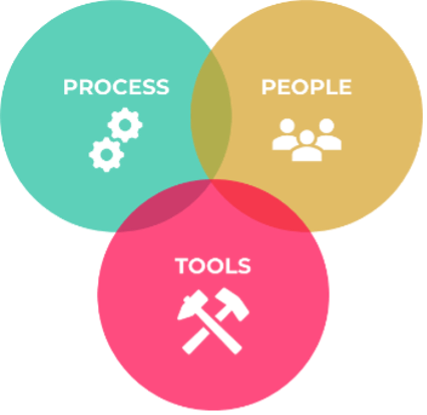
The rationale behind Portfolio Management and a typical model was previously discussed, as referred, so we can skip this now. As we have also stated before, , no system can be complete without a software providing the platform where the model is put into practice.
As such, effectiveness of the system is obviously correlated with the selection of the right software solution. So, more and more, our expertise on project related software is summoned to help.

Many people still believe that Portfolio Management is the monitoring and steering of the whole set of projects of an organization company. It's not.
Portfolio Management Tools
There are tons of tools focusing on Portfolio Management, not to mention in-house tools, typically developed by organizations in Excel. Generally, existing tools can provide a helicopter view of the project’s status and figures and they can help select a portfolio mix – with different degrees of efficiency. They focus on PPM but most, if not all, fail at integration with the other project related software and data.
There should be a single source of truth. Data should be collected and pulled, automatically or automated by a dedicated service, from other project related tools (like scheduling engines), mirrored at Portfolio level, and the other way around. But this is not always the case, Projects and Portfolio are quite commonly not synced.
This is one of the greatest pains with these environments and a source for lack of adherence by project teams. Keeping the system updated is time-consuming and the existing information is prone to errors, as this information has to be input multiple times.
Our vision on a PPM system
Rather than a PPM system, we should think of an Enterprise Project & Portfolio System, that allows centralized management of the projects as a whole. An Enterprise Project & Portfolio System aids to optimize the Portfolio value, but also to manage each project individually, from scratch, helping to deliver them within scope, time and budget.
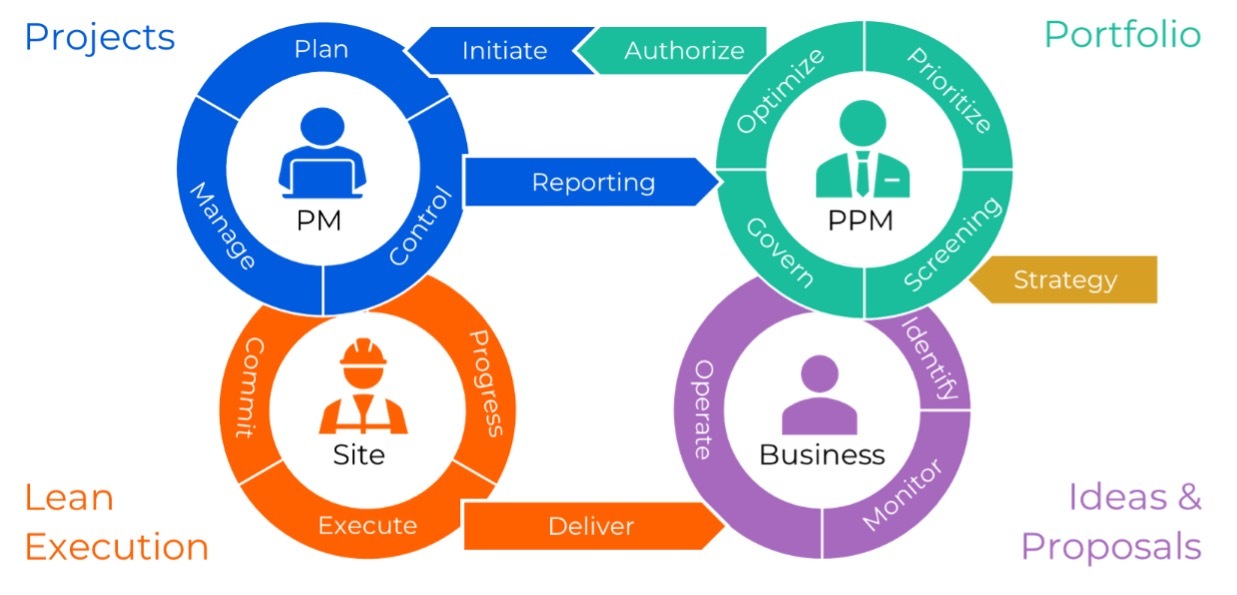
The image above depicts our vision of an Enterprise Project & Portfolio System, and it is quite self-explanatory. Above all, it demonstrates the interfaces between different dimensions in PPM, clarifying the need for an integrated system.
This is where Oracle Primavera Cloud (OPC) comes into the picture. It is an enterprise solution for all stakeholders, containing multiple modules by integrating portfolio and project management features and covering both Portfolio and Project life-cycles and domains (time, cost, etc.).
We have been promoting its Project Controls features for a while now. These features are quite impressive, without a doubt, but it is when they are combined with the portfolio management aspect that OPC raises the level of the game.
Portfolio Management in Oracle Primavera Cloud
From the previous image we can easily recognize the logical sequence followed by PPM, which was described in our previous blogpost: Listing, Screening, Prioritizing, Optimizing, Authorizing and Steering.
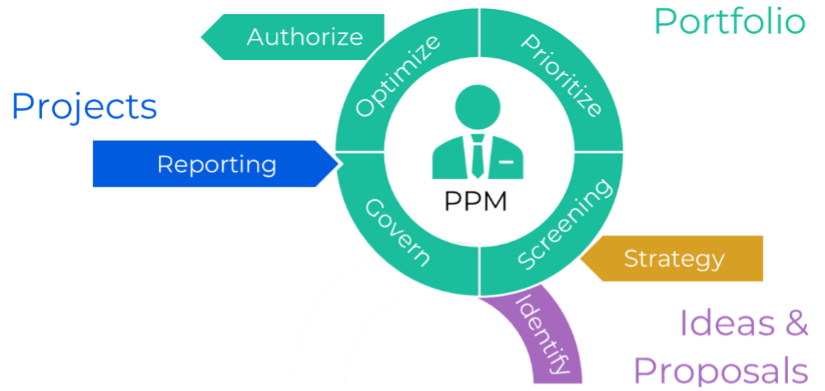
So, let’s take a closer look at the Portfolio Management functionalities of the suite and how these can support the framework:
1. Full Framework
To start, OPC can automate all the portfolio management processes with the Workflows and Forms module, including the projects proposal sequence.

This application uses predefined sequences of steps (tasks or decisions) to route different kinds of information among different kinds of users. With this app, complex processes, like submitting and reviewing project proposals, are almost fully guided, so that everyone involved knows what is expected from them. Different team members are called for input to define the project, namely the business case and constraints, using the several dedicated Project Controls modules and features of OPC (Schedule, Costs, etc.), while Portfolio Managers will be called to evaluate and select projects.
2. Identifying and Listing Potential Projects
A very specific workflow concerns the ‘Ideas’ module of OPC. Ideas are very specific objects within the tool, lesser detailed than a project, listed and tracked independently.
Day-to-day business generates problems and/or opportunities within the organization. The app works as a list of proposed ideas to solve those problems or to explore those opportunities. If accepted by the decision-maker (Portfolio Manager, head of department, etc.), the idea is automatically transformed into a project object, with all data being properly mapped between the different objects. This marks the start of a project proposal workflow, and projects are further detailed so their fit to the organization can be more accurately assessed.
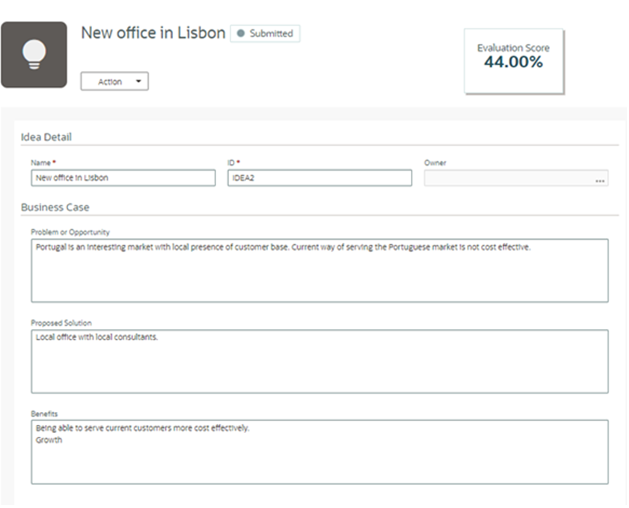
3. Screening the Projects
All proposed initiatives are screened so that only the most suitable ones are included in the Portfolio. OPC includes a few features that allow projects to be evaluated and scored.
A first one is the Evaluation page, which uses standard evaluation cards defined at corporate or department level. This page is also available for ideas and OPC allows different evaluation cards to cope with higher level of detail of projects when compared to ideas. One strong point of this feature is that evaluation criteria can be linked to the information provided elsewhere in the tool (financial data for example), allowing the score to be calculated automatically.
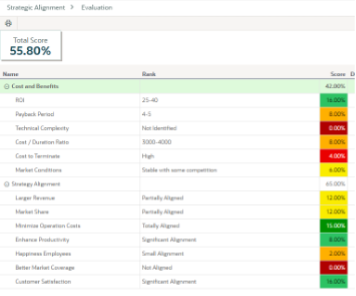
Projects should be evaluated, among other things, according to their alignment with the organizational strategy, so that we assess the value that the project may bring to the organization. This can be dealt within the same evaluation card or by using a strategy map within the Strategic Alignment app. In this app, organizations can describe their strategy hierarchically and projects are then scored regarding their alignment with the several strategy nodes.
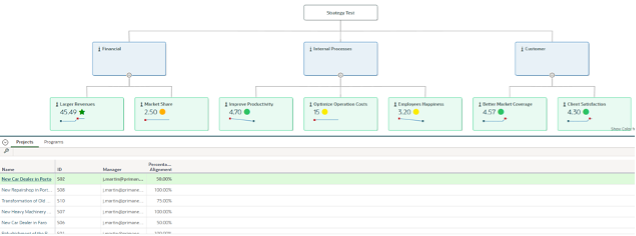
This module also includes a scorecard, so that we can track how the organization is performing strategically. This is Oracle’s answer to a Balanced Scorecard requirement for more mature organizations (more into this subject can be found here).
4. Prioritizing and Optimizing the Portfolio
After the screening process, the suitable projects are added to the Portfolio, manually or automatically (OPC allows this in a couple of ways). All figures provided at project level, including evaluation scores, are rolled up to the portfolio, and priorities can be established. Again, OPC incorporates several native features to address this, like an evaluation matrix (with all projects’ evaluation cards) and a highly customizable bubble chart.

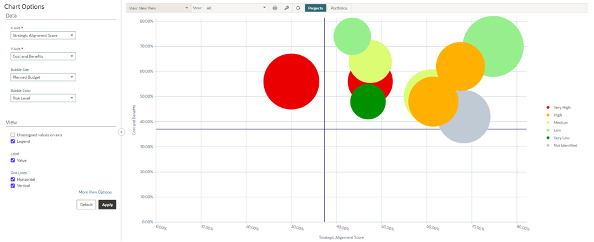
There is no doubt that these pages have a great visual impact, but they are mainly for analysis and reporting. The pivotal page in this environment is the Budget Plan where Portfolio Managers can optimize, balance, and select the projects to be implemented and the ones to be shelved, using the defined priorities. Budget is then allocated to these selected projects, where team members can start to work on it.
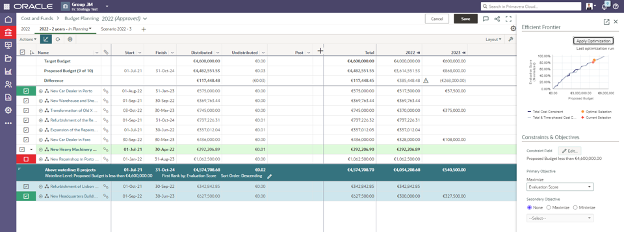
5. Portfolio Governance
During the implementation, each project generates data that will come back to the Portfolio, so that Portfolio Managers can track both overall Portfolio performance and the performance of the seperate projects within the Portfolio. Apart from the dedicated reporting modules (Dashboards and Reports), OPC also offers some other options to tackle this requirement, like a portfolio scorecard (different than the strategy scorecard), which allows senior managers to have an eagle-eye on the status of the EPPM system (both on Project and Portfolio levels).
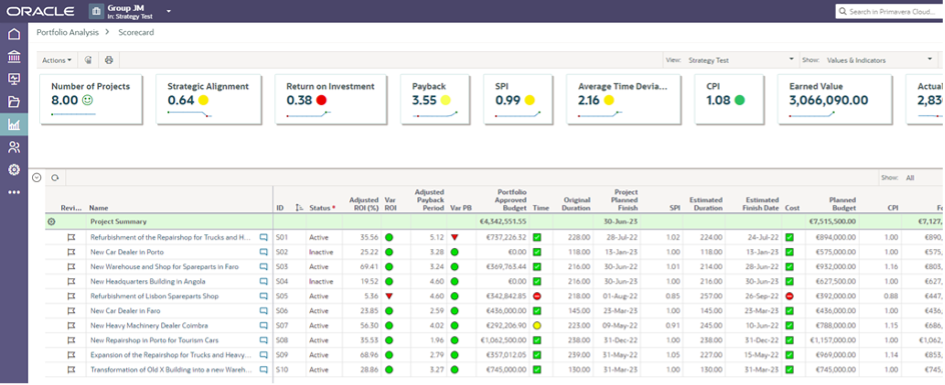
Still related to portfolio monitoring, the Workflows and Forms module contains a Monitor Workflow page, so that the Portfolio Managers can track each project workflow - current step, performer, etc.
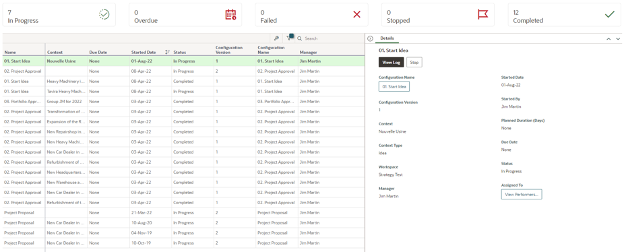
Conclusion
Primavera Cloud includes several features to address the whole Portfolio model, as we showed. But most importantly, these features are heavily integrated, namely with the project controlsfeatures, allowing organizations to set in motion a complete Enterprise Project & Portfolio Management system.
So, if you think this can be the right solution for your business, do not hesitate to contact us.



